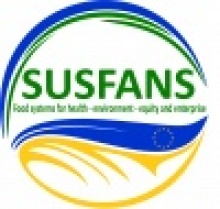| Title | Defining a land boundary for sustainable livestock consumption |
|---|---|
| Paper authors | |
| Journal | Global Change Biology |
| journal-issue | Volume24, Issue 9, September 2018, Pages 4185-4194 |
| Date | Sep 14 2018 |
| Description | The need for more sustainable production and consumption of animal source food (ASF) is central to the achievement of the sustainable development goals: within this context, wise use of land is a core challenge and concern. A key question in feeding the future world is: how much ASF should we eat? We demonstrate that livestock raised under the circular economy concept could provide a significant, nonnegligible part (9–23 g/per capita) of our daily protein needs (~50–60 g/per capita). This livestock then would not consume human‐edible biomass, such as grains, but mainly convert leftovers from arable land and grass resources into valuable food, implying that production of livestock feed is largely decoupled from arable land. The availability of these biomass streams for livestock then determines the boundaries for livestock production and consumption. Under this concept, the competition for land for feed or food would be minimized and compared to no ASF, including some ASF in the human diet could free up about one quarter of global arable land. Our results also demonstrate that restricted growth in consumption of ASF in Africa and Asia would be feasible under these boundary conditions, while reductions in the rest of the world would be necessary to meet land use sustainability criteria. Managing this expansion and contraction of future consumption of ASF is essential for achieving sustainable nutrition security. |
| Category | Journal articles |
| URL | |
| Authors at SUSFANS | |
| Work package | |
| Keywords | animal source food, greenhouse gas emissions, land boundary, land use, leftovers, livestock, recycling biomass, sustainable consumption, sustainable development goals |

